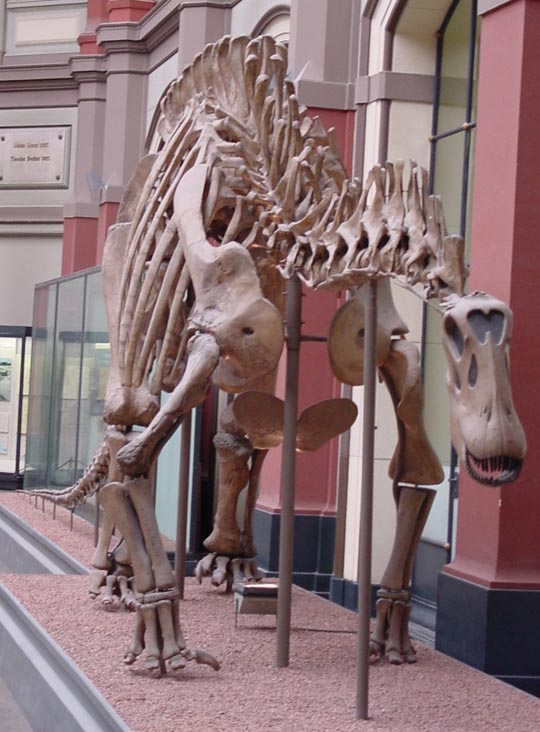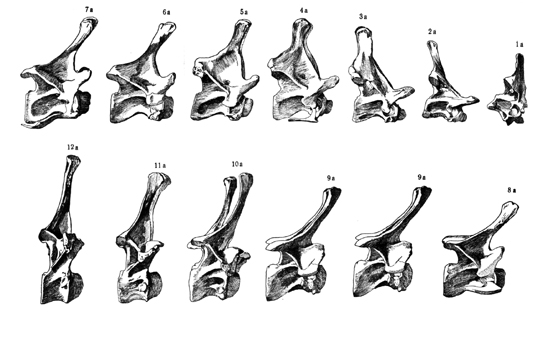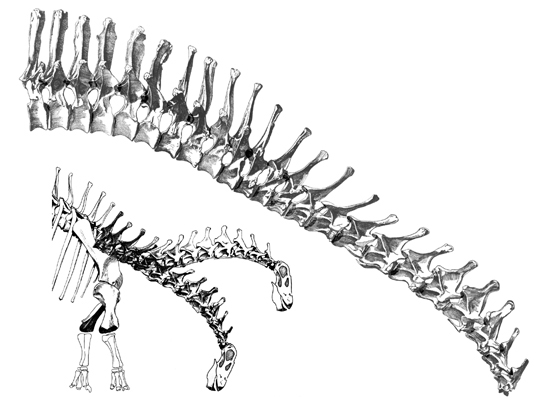
Dicraeosaurus hansemanni is a remarkably well preserved sauropod, mounted at the Humboldt Museum in Berlin with a distinctive sigmoid curve to the neck, where it dips down at the shoulder, then rises at mid neck to descend again at the head. Is this curve intrinsic to this taxon of sauropod? (By intrinsic, I refer to the curvature in the undeflected state, i.e., the osteologically neutral pose. In the undeflected state, the camel neck assumes a catenary-like 'u'-shaped curve, a bird neck is sigmoidal 's'-shaped, and an adult giraffe is has a sharp upturn or 'j'-shape.) The following photo is courtesy J. Michael Parrish.

Sauropod necks are often depicted with a sigmoid curve. The curve given Dicraeosaurus is less obvious because of the significant downslope of the anterior dorsal vertebral column; but as can be seen in the foreshortened view above, this sauropod has also been given a reflex curve. Is that curvature intrinsic (present in the undeflected state) or a matter of dorsiflexion at the base of the neck and ventriflexion at the cranial end? To answer this, we should go back to the original material, preferably the fossil bones themselves, or at the very least, to accurate illustrations (in this case the figures in Janensch's original description):

Placing each successive pair of vertebrae in neutral position can reveal the true neutral (or undeflected) curvature of the neck. It turns out that the neck of Dicraeosaurus is devoid of an inflection point at mid length; the neck is simply droopy, not sigmoid or "S" curved. The dorsal vertebral column appears to be quite arched. It is interestingly that the trunk is substantially more curved than those of the larger sister diplodocids Apatosaurus and Diplodocus. But like the other diplodocids (and indeed every sauropod I've studied) the vertebral column in the cervicodorsal region (where the neck emerges from the shoulders) the neck is quite straight. In the following the cervical and cervicodorsal vertebral column is reconstructed from individual illustrations from Janensch. The inset shows this new reconstruction scaled and superimposed onto a skeletal reconstruction, also from Janensch, that shows the familiar sigmoid curve (note: I stuck the same head on the newly posed neck, holding the same angulation with respect to the atlas, and it sure seems bovine). This exercise impressed me with the accuracy of the original illustrations, for the two independently derived illustrations are in remarkable agreement where they overlap. Note that the neck pose as depicted in Janensch was very likely attainable by the living Dicraeosaurus; this taxon could have reached this sigmoid curve simply by dorsiflexion at the base of the neck (note that the natural droop near the neck is actually close to the undeflected pose!). It is just apparent now that the neutral, or undeflected pose, brought the head much closer to the ground than traditionally figured.

Copyright © 2011 Kent A. Stevens, University of Oregon